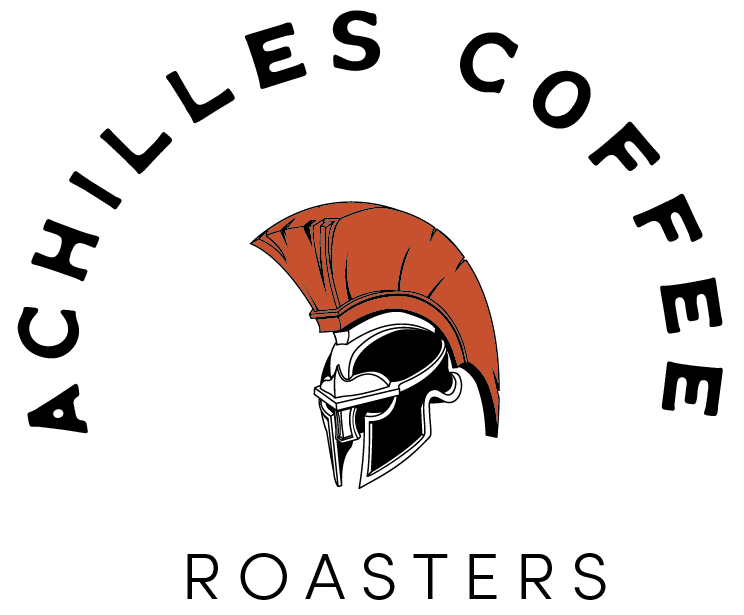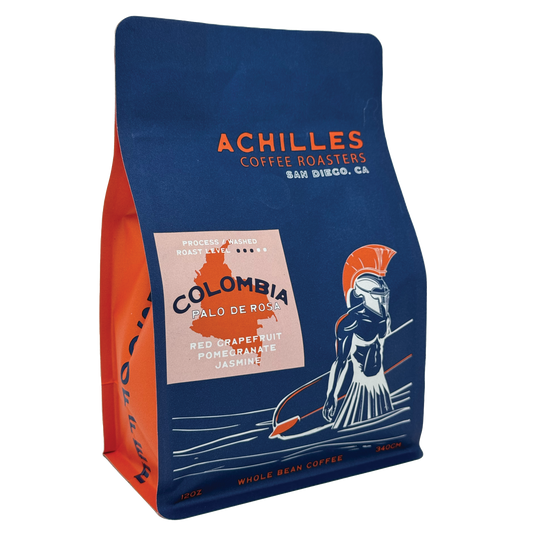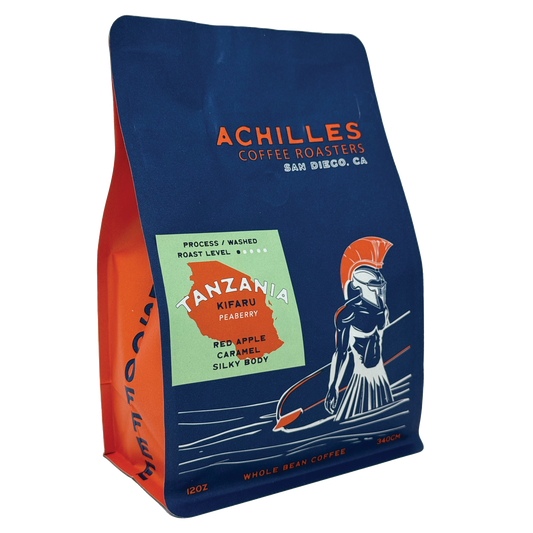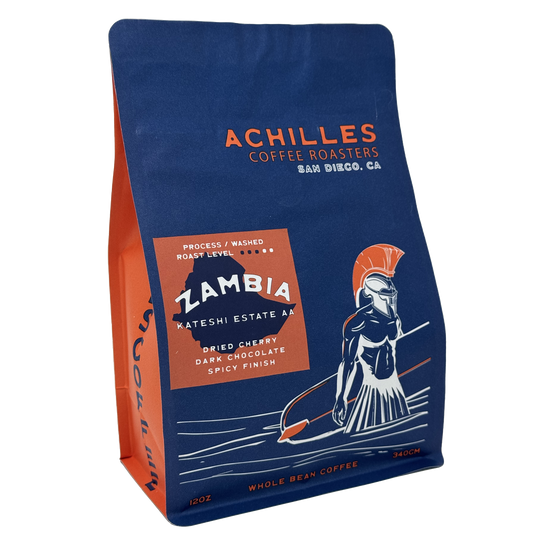Pairing coffee with food is one of the most overlooked yet profoundly rewarding aspects of culinary enjoyment. For centuries, wine has been deliberately matched with meals to heighten aroma, balance richness, and harmonize contrast, but coffee—equally complex, equally expressive, and often even more versatile—has rarely been given the same attention. This is a missed opportunity. Coffee possesses one of the broadest flavor spectrums of any beverage on the planet, with tasting notes that span bright citrus, ripe berries, tropical fruit, deep cocoa, toasted nuts, caramelized sugar, warm spices, florals, savory earthiness, and countless combinations in between. When thoughtfully paired, these flavors can lift a dish, soften its edges, sharpen its highlights, or create a new layered experience that neither the food nor the coffee could achieve alone.
Yet in most settings, people reduce coffee pairings to the simplest and most familiar format: coffee and pastries. While that pairing is delightful, it barely scratches the surface of what is possible. Coffee is capable of dancing with far more than croissants and donuts. There are extraordinary savory pairings—herb-roasted chicken with a bright Kenyan, barbecue ribs with a smoky Sumatran, aged cheddar with a Guatemalan medium roast. There are cheese pairings, fruit-forward pairings, chocolate pairings, brunch pairings, and full multi-course tasting menus where each dish is designed around a carefully selected coffee. Coffee can be as elegant with dessert as a late-harvest Riesling, as grounding with a hearty breakfast as robust tea, as bold with dinner as a structured red wine. When you understand how coffee’s structure—its acidity, sweetness, bitterness, aroma, and body—interacts with food, pairing becomes not just possible but extraordinary.
The right pairing can elevate both the cup and the plate. A fruity, floral Ethiopian coffee can taste sweeter and more vibrant beside a lemon tart or berry pastry. A rich, earthy Sumatran becomes deeper and more resonant alongside roasted mushrooms or caramelized meats. A balanced Colombian reveals gentle caramel and nut undertones when matched with almond pastries or grilled sandwiches. With the right match, flavors become clearer, more expressive, more dimensional. The coffee seems more nuanced; the dish seems more complete. Everything feels intentional.
But the wrong pairing can have the opposite effect. Serving a bright, high-acid Ethiopian alongside an acidic dish can clash and create sourness. Pairing a delicate pastry with an aggressive dark roast may make both taste harsh. Combining a subtle tea-like coffee with intensely spiced food might cause the coffee to disappear entirely. Poorly chosen pairings mute flavors, amplify bitterness, or create a muddled confusion where nothing tastes quite right. Understanding the principles of pairing isn’t about restriction—it’s about unlocking harmony.
This ultimate flavor guide dives deep into the world of coffee pairings, offering a comprehensive roadmap for anyone who wants to explore how coffee and food enhance one another. We’ll explore the science of flavor interaction, including how acidity balances richness, how bitterness complements sweetness, how aroma compounds influence sensory perception, and how body and mouthfeel contribute to a pairing’s success. We’ll look at specific pairing strategies, such as complementary vs. contrasting matches, intensity matching, and using coffee’s natural tasting notes to accentuate specific ingredients. We’ll break down regional pairings, showing how origin characteristics—from African florals to Latin American chocolates to Southeast Asian earthiness—lend themselves to different types of cuisine. We’ll explore roast-level pairings, detailing how light, medium, and dark roasts behave differently with pastries, cheeses, meats, fruits, and desserts. And finally, we’ll build complete pairing menus for breakfast, brunch, lunch, dessert, and even dinner, so you can apply these principles directly in your kitchen or café.
Whether you’re a home coffee enthusiast looking to make breakfast more interesting, a café owner hoping to elevate your menu, a roaster wanting to educate customers, or a food lover curious about new flavor experiences, this guide will show you how to create coffee-and-food combinations that don’t just work—they shine. Pairing coffee is an art, a science, and a deeply pleasurable exploration of what happens when aroma, texture, acidity, sweetness, and flavor align. Once you understand how to match coffee with food intentionally, you’ll never think of your morning cup—or your meals—the same way again.
Why Coffee Pairing Matters: The Science of Flavor Interaction
Coffee contains more than 800 aromatic and flavor-active compounds—surpassing even wine—which makes it one of the most chemically complex beverages on the planet. These compounds span an enormous sensory range: fruity esters, floral terpenes, caramelized sugars, nutty pyrazines, earthy phenols, spicy aromatics, buttery lactones, and countless volatile molecules created during the Maillard reaction and caramelization. When you pair coffee with food, these compounds don’t simply sit side by side—they interact, collide, amplify, contrast, or harmonize in ways that meaningfully change the flavor experience. Understanding how these compounds behave is the foundation of thoughtful pairing and can dramatically enhance both the coffee and the dish.
Complementary Flavor Matching
Complementary pairing is one of the most intuitive and satisfying approaches. When you pair foods and coffees that share similar flavor families, they enhance each other through resonance.
Examples include:
-
Chocolate-forward coffees (such as Brazilian, Guatemalan, or Sumatran medium-dark roasts) paired with chocolate cakes, brownies, tiramisu, or cocoa-rich pastries
-
Citrus-forward Ethiopian coffees paired with lemon tart, orange scones, berry pastries, or fruit salads
-
Nutty Latin American coffees paired with almond croissants, pecan pies, hazelnut biscotti, or peanut butter desserts
When flavors overlap, the palate perceives them as more intense, rounder, and more cohesive. It’s like tuning two instruments to the same key—everything feels harmonious.
Contrasting Flavor Pairing
Contrasting flavors create excitement and balance. Instead of mirroring notes, you intentionally pair opposites to create a dynamic interplay.
Examples include:
-
Bright acidic coffees cutting through rich, buttery pastries like croissants, brioche, pound cake, or danishes
-
Bitter, smoky dark roasts balancing sweet desserts such as cheesecake, crème brûlée, or caramel pudding
-
Wine-like natural processed coffees pairing beautifully with savory dishes, such as charcuterie or aged cheeses, because their fruitiness contrasts salt and fat
This is the same principle behind pairing wine with cheese or acidity with fatty foods: contrast creates equilibrium.
Palate-Cleansing Properties
Coffee—especially light and medium roasts—acts as a natural palate cleanser. Its acidity and bitterness help:
-
Cut through fat
High-fat foods like pastries, cheese, fried dishes, and cream-heavy desserts coat the palate. Coffee’s acidity scrapes away that richness, restoring clarity. -
Balance sweetness
Desserts often become cloying without a counterpoint. Coffee’s bitterness offsets sugar, preventing palate fatigue. -
Highlight subtle flavors
Aromatic food notes such as citrus zest, vanilla, spices, herbs, or delicate fruits become more noticeable when coffee resets the taste buds between bites.
This makes coffee surprisingly effective with otherwise heavy or oversweet dishes.
Texture and Body Interaction
Flavor isn’t just taste—it’s texture. Coffee’s body (light, medium, or heavy) influences how the pairing feels:
-
Light-bodied coffees (tea-like Ethiopian or Panamanian varieties) pair well with airy pastries, fruit, yogurt, or lighter breakfasts.
-
Medium-bodied coffees match well with breads, sandwiches, nutty desserts, and mid-weight dishes.
-
Full-bodied coffees (Sumatra, Brazil, dark roasts) pair beautifully with dense, rich foods—like chocolate tortes, hearty brunch dishes, or smoky meats.
Texture interaction determines how flavors linger, meld, or evolve sip by sip.
Temperature Influence
The serving temperature of coffee profoundly changes the pairing:
-
Hot coffee enhances aroma, unlocking floral, fruity, and sweet notes that complement pastry, chocolate, and savory brunch dishes.
-
Warm or cooling coffee increases bitterness, which can balance very sweet desserts.
-
Iced coffee or cold brew amplifies sweetness and reduces acidity, making it exceptional with spicy foods, chocolate, berries, and richer desserts.
Temperature affects perception more than most people realize—and adjusting it can make or break a pairing.
How to Pair Coffee with Food: Core Principles
1. Match Intensity
One of the most fundamental principles of coffee-and-food pairing is intensity matching. Just as you wouldn’t pair a delicate white fish with a full-bodied Cabernet Sauvignon, you shouldn’t overwhelm a subtle food with an overly bold coffee—or vice versa.
Light, delicate foods pair best with light-bodied, nuanced coffees where the subtle aromatics won’t be drowned out. Think: fresh fruit, yogurt parfaits, lightly sweet pastries, simple butter cookies, airy sponge cakes, or mild cheeses. These meals flourish alongside washed Ethiopian coffees, Panamanian Geshas, or other floral, tea-like brews.
On the opposite end of the spectrum, heavier, richer dishes demand a coffee with enough presence and structure to stand beside them. A dense chocolate torte, a salted caramel croissant, savory brunch dishes like eggs Benedict, barbecued meats, or aged cheeses all call for something with deeper body and stronger roast character—like a Sumatran, a Brazilian natural, or a well-developed medium-dark roast.
Intensity matching prevents one element from overpowering the other. When both the coffee and the food share similar weight and presence, they harmonize instead of compete.
2. Consider Acidity
Acidity is one of the most misunderstood aspects of coffee flavor, but it’s also one of the most important for pairing. Coffee acidity—bright, vivid, sparkling sensation often found in African and some Latin American coffees—acts like a squeeze of citrus on food. It lifts richness, cuts through fat, and refreshes the palate.
-
Acidity brightens rich foods such as croissants, brioche, butter-heavy pastries, cheesecake, quiche, or creamy sauces.
-
But too much acidity can clash with acidic foods like citrus desserts, tomatoes, berries, vinaigrettes, or yogurt. When acid meets acid, the result may taste sharp, sour, or overly tangy.
Balance is essential. If your dish is already high in acidity, steer toward a coffee with more nutty, chocolatey or caramel-forward notes. If your dish is rich, buttery, or heavy, a bright coffee becomes a flavorful counterweight.
3. Complement or Contrast—But with Intention
Pairing works best when done consciously. You can either complement flavors (analogous to matching colors in a palette) or contrast them (like pairing salty with sweet), and both can be exceptionally successful when applied thoughtfully.
-
Complementary pairings amplify shared flavors.
-
A chocolate-forward Guatemalan medium roast with brownies.
-
A floral Ethiopian with lavender or citrus pastries.
-
A nutty Colombian with almond croissants.
Because the coffee and food echo each other, both taste more layered and expressive.
-
Contrasting pairings create balance and tension.
-
A bright Kenyan coffee cutting through salty bacon or rich eggs Benedict.
-
A smoky dark roast balancing a very sweet dessert like crème brûlée.
-
A fruity natural-processed coffee offsetting savory charcuterie.
Both approaches can elevate the dining experience—the key is intention, not randomness.
4. Use Origin Characteristics
Coffee origin plays a decisive role in flavor because terroir—altitude, climate, soil, varietal, and processing—shapes aromatic compounds. These regional tendencies make excellent pairing guides:
Africa:
-
Flavor notes: fruity, floral, citrusy, tea-like, aromatic
-
Pairings: fruit tarts, lemon pastries, fresh berries, goat cheese, yogurt bowls, light brunch dishes
African coffees excel with foods that highlight freshness, brightness, and delicacy.
Latin America:
-
Flavor notes: balanced, nutty, chocolatey, caramel-sweet
-
Pairings: pastries, cookies, chocolate desserts, nut-based sweets, sandwiches, mild cheeses
These coffees work remarkably well with a broad variety of dishes because of their dependable balance.
Asia-Pacific:
-
Flavor notes: earthy, bold, spicy, herbal, full-bodied
-
Pairings: mushroom dishes, roasted meats, dark chocolate, caramel desserts, aged cheeses, hearty brunch dishes
These coffees are ideal when the food brings richness, umami, or strong seasoning.
By relying on origin cues, you can make fast, accurate pairing decisions even without tasting the coffee first.
5. Roast Level Matters
Roast level significantly influences a coffee’s sweetness, bitterness, aroma, body, and overall balance—all of which impact food pairing success.
Light roasts
-
Flavor: bright, fruity, floral, high-acid, complex
-
Best pairings: fruit-forward pastries, citrus desserts, yogurt, granola, almond croissants, cheeses, light breakfast foods
Light roasts shine when the food is delicate or when brightness helps cut through richness.
Medium roasts
-
Flavor: caramel, nuts, soft fruit, balanced sweetness
-
Best pairings: pancakes, muffins, sandwiches, caramel desserts, biscotti, brunch dishes, mild cheeses
Medium roasts offer versatility—they complement sweetness while maintaining nuance.
Dark roasts
-
Flavor: smoky, bitter-sweet, chocolatey, full-bodied
-
Best pairings: chocolate desserts, caramel sweets, doughnuts, hearty savory dishes, barbecue, smoked meats, aged cheeses
Dark roasts stand up to intense flavors and enhance richness, bitterness, and caramelization.
Choosing roast level intentionally allows you to steer your pairing experience in the direction of clarity, balance, comfort, or intensity.
Pairing by Roast Level
Light Roast Pairings
Light roasts highlight acidity, fruit, and delicate aromatics.
Perfect with:
-
Citrus pastries
-
Fresh fruit (berries, citrus, stone fruit)
-
Yogurt parfaits
-
Buttery croissants
-
Soft cheeses (chèvre, brie)
-
Light desserts like macarons
Avoid pairing with extremely rich or heavily spiced foods, which can overpower the delicate coffee.
Medium Roast Pairings
Medium roasts offer balance—caramel sweetness, nuttiness, and mild fruit.
Perfect with:
-
Chocolate chip cookies
-
Banana bread
-
Almond pastries
-
Oatmeal bowls
-
Grilled chicken or turkey sandwiches
-
Mild cheeses like Gouda or Havarti
These pairings work because medium roasts are versatile and harmonize with both sweet and savory foods.
Dark Roast Pairings
Dark roasts are bold, smoky, and heavy-bodied with low acidity.
Perfect with:
-
Chocolate truffles
-
Caramel desserts
-
Barbecue dishes
-
Smoked meats
-
Rich pastries (cinnamon rolls, fudgy brownies)
-
Aged cheeses (cheddar, Gruyère, Asiago)
Dark roasts also cut through high-fat foods effectively.
Pairing by Region
Different origins offer different flavor landscapes. Use these traits to guide pairings.
Ethiopia
Floral, fruity, tea-like, citrus-forward
Pair with:
-
Lemon pastries
-
Berry tarts
-
Honey cakes
-
Goat cheese
-
Herbal dishes like thyme or rosemary chicken
Kenya
High acidity, blackcurrant, citrus, complex
Pair with:
-
Bright fruits (grapefruit, orange)
-
Cinnamon pastries
-
Savory-sweet dishes
-
Sharp cheeses
-
Dark chocolate
Colombia
Balanced acidity, caramel sweetness, mild fruit
Pair with:
-
Caramel desserts
-
Nut-based pastries
-
Breakfast dishes
-
Grilled chicken
-
Milk chocolate
Brazil
Nutty, chocolatey, low acidity
Pair with:
-
Nutty baked goods
-
Chocolate desserts
-
Peanut butter treats
-
Pancakes and waffles
-
Roasted meats
Guatemala
Cocoa, spice, citrus, medium body
Pair with:
-
Spiced desserts (cinnamon, nutmeg)
-
Molasses cookies
-
Dark chocolate
-
Grilled pork
-
Savory stews
Sumatra
Earthy, herbal, full-bodied
Pair with:
-
Mushrooms
-
Savory dishes
-
Dark chocolate
-
Caramelized meats
-
Aged cheeses
Pairings by Food Category
Best Breakfast Pairings
-
Croissants + Ethiopian Natural (buttery richness balanced by berry sweetness)
-
Bagels & cream cheese + Colombian Medium Roast (acidity cuts the fat)
-
Breakfast burrito + Sumatran Dark Roast (spicy, savory harmony)
-
Granola + Kenyan Washed Coffee (brightness lifts honey and nuts)
Pastries & Baked Goods
-
Chocolate cake + Brazilian or Sumatran dark roast
-
Cinnamon rolls + Guatemalan medium roast
-
Scones + Ethiopian washed light roast
-
Banana bread + Central American medium-light roast
Desserts
-
Fruit tart + Kenyan or Ethiopian
-
Cheesecake + Colombian medium
-
Chocolate mousse + dark roast
-
Carrot cake + Guatemalan medium-dark
Savory Dishes
Coffee and savory dishes pair surprisingly well:
-
Roast chicken + Costa Rican medium roast
-
Barbecue ribs + dark roast espresso
-
Spicy Thai food + Ethiopian natural (fruit contrasts heat)
-
Mushroom risotto + Sumatran earthy roast
Cheese Pairings
-
Brie + Ethiopian washed
-
Cheddar + Brazilian dark roast
-
Blue cheese + Kenyan AA
-
Goat cheese + Yirgacheffe
Chocolate Pairings
Chocolate and coffee are natural allies:
-
Milk chocolate + medium roast Latin American
-
Dark chocolate + Sumatran or Rwandan
-
White chocolate + Ethiopian light roast
Pairing By Brew Method
Espresso
Best with:
-
Chocolate desserts
-
Almond pastries
-
Strong cheeses
-
Caramel-based desserts
Pour-Over
Highlights delicate flavor:
-
Fruit pastries
-
Citrus desserts
-
Light breakfasts
French Press
Richer extraction:
-
Savory dishes
-
Heavy pastries
-
Meat-based breakfasts
Cold Brew
Smooth, low-acid:
-
Spicy foods
-
Chocolate desserts
-
Creamy dishes
Complete Coffee Pairing Menus
Breakfast Menu
-
Ethiopian light roast + blueberry scone
-
Colombian medium roast + avocado toast
-
Guatemala medium-dark + cinnamon roll
Brunch Menu
-
Cold brew + spicy breakfast sandwich
-
Chemex Ethiopian washed + lemon loaf
-
Sumatra dark roast + maple bacon
Dinner Menu
-
Kenya AA + citrus roasted chicken
-
Costa Rica medium roast + grilled vegetables
-
Sumatra dark roast + steak or BBQ
Dessert Menu
-
Brazil medium roast + chocolate chip cookies
-
Ethiopia natural + raspberry tart
-
Espresso + tiramisu
-
Guatemala medium-dark + pecan pie
Tips for Perfect Pairings
-
Match body with body
-
Use acidity to balance fat
-
Use sweetness to complement bitterness
-
Test pairings with small bites first
-
Choose fresh, properly roasted and stored coffee
-
Brew using a method that highlights the desired notes
Final Thoughts: Pairing Coffee Is Pure Flavor Exploration
Pairing coffee with food isn’t simply a technique—it’s a form of flavor exploration that transforms the way you experience both the cup and the plate. When done intentionally, pairing becomes a sensory dialogue: aromas rise, textures interact, acids lift fats, sweetness softens bitterness, and subtle flavor notes you barely noticed before suddenly come alive. A thoughtfully chosen pairing doesn’t just highlight what’s already present in the coffee—it unlocks nuances that would otherwise remain dormant. It also elevates the food, revealing layers of complexity that a single bite or sip alone can’t fully express.
When you match coffee with food consciously, you begin to realize just how expressive coffee truly is. A bright Ethiopian washed pour-over can taste sweeter and more dynamic when paired with a berry tart; a chocolatey medium roast from Guatemala becomes deeper and rounder alongside almond pastries; a smoky dark roast from Sumatra gains dimension when matched with caramelized meats or aged cheeses. These experiences teach you that coffee is not merely an accompaniment—it’s a catalyst that enhances and redefines flavor.
The beauty of coffee pairing lies in its boundless possibilities. You can explore by origin, examining how African coffees interact with citrus or dairy, how Latin American coffees blend with chocolate or nuts, or how Indonesian coffees amplify earthy, savory, and umami-rich foods. You can explore by roast level—light roasts with fruit-forward dishes, medium roasts with pastries and brunch foods, dark roasts with desserts or savory mains. You can explore by brewing method—espresso pairings, pour-over pairings, immersion pairings, cold brew pairings—and watch how extraction style alters the way coffee behaves alongside food.
And the journey never ends. Coffee is seasonal, agricultural, variable, and constantly evolving. Beans from the same region can taste different year to year; processing methods (washed, natural, honey) add new dimensions; roast profiles deepen or brighten certain notes; grind size, water temperature, and brew ratios all influence the final cup. Every change in the coffee creates a new pairing opportunity. Pairing becomes an ongoing experiment—creative, sensory, endlessly rewarding.
Whether you’re savoring a simple weekday breakfast or designing a multi-course tasting menu, intentional pairing turns coffee from a background habit into a true culinary companion. It transforms routine moments into experiences worth pausing for. It encourages you to slow down, taste deliberately, and appreciate the harmony between food and drink. And it reminds you that coffee isn’t just something you consume—it’s something you explore.
Pairing coffee with food invites you to treat your palate like an instrument and coffee like the conductor that shapes each note. With hundreds of possible combinations across origins, roast profiles, and brewing techniques, you’re entering a world where every cup is an opportunity to discover something new, surprising, and delicious. In the end, coffee pairing is about curiosity, creativity, and the pleasure of pushing flavor to its fullest potential. It’s an ongoing adventure—one where the next great combination is just a sip and a bite away.








